Client:NTT Communications
Industry:Telecommunications
Region:Europe
Region:North America
NTT Communications Transforms Procurement Processes with RPA

0
Processing errors as part of initial pilot program
100%
Accuracy processing payment and transfer slips
3x
Productivity of UiPath Robots were three times higher than human employees
30%
The company’s contract and payment centers expect to reduce their workload by 30%
60k
Automated processes will save more than 60,000 man hours annually
Client Overview
NTT Communications is a leading communications carrier with established subsidiaries and offices in more than 110 cities across more than 40 countries.
NTT Communications used UiPath RPA technology to streamline and improve vital procurement processes.
The initial pilot program helped the company save more than 60,000 man hours per year, and further use of robotic process automation (RPA) will continue to enable NTT Communications to become more efficient, productive, and competitive. NTT Communications is a leading communications carrier with established subsidiaries and offices in more than 110 cities across more than 40 countries. The company provides innovative communications services and solutions to corporate clients on a global scale.
Internally, the NTT Communications Procurement Division supplies virtually everything the entire company needs. This division is a vast, complex system that touches every aspect of procurement, including vendor negotiations, contracts, orders, and payments. The Procurement Division also oversees other subdivisions, such as the company’s contract and payment centers, where approximately 80 employees process hundreds of thousands of contracts and payments each year.

It is a labor-intensive process, but contracts and payments are critically important to the success of the entire business, which means that errors or delays cannot be tolerated. NTT Communications had always invested in new methods to ensure fast, accurate contract and payment processing, such as business process reengineering (BPR) and optimizing operations. These approaches still required employee participation, so NTT Communications continued to look for emerging technologies.
The fact that our onsite engineers could learn the system shortly and get up and running quickly-and at a low cost-was extremely appealing.
Takashi Yagi • Senior Manager, Procurements, NTT Communications
Selecting the right RPA platform
As a company fully committed to optimizing customer facing operations as well as its own internal systems, NTT Communications realized it needed to digitally transform its procurement processes.
This is when RPA caught the company’s attention. RPA technology offered real business potential: NTT Communications saw that it could use RPA to automate many important operational processes, especially highly repetitive, rules-based tasks.
Not only would RPA streamline labor-intensive, manual efforts, but it also would help NTT Communications avoid human error, increase employee productivity, and reduce costs.
The company performed a thorough review of RPA vendors, and evaluated all vendors on criteria such as overall functionality, cost, service, and support. NTT Communications concluded that UiPath was the best choice. The biggest determining factor was the overall ease of use of the UiPath Enterprise RPA Platform; specifically, how easy it was for internal teams to create and manage Robots and automation processes.
“After our onsite engineers spent about a week training in the UiPath RPA Academy, we realized that anyone with minimal software engineering experience could learn to use the UiPath Platform,” said Takashi Yagi, Senior Manager, Procurements. “The fact that our onsite engineers could learn the system shortly and get up and running quickly-and at a low cost-was extremely appealing.”
NTT Communications believed UiPath’s ease of use would translate into productivity and digitalization. “Since this was a new investment, we wanted to eventually be able to run the RPA system on our own,” said Katsunori Yamashita, Senior Vice President and Head of Procurements at NTT Communications. “Our goal was to make it as easy as possible to create process scenarios and to maintain and manage the Robots that automated them.”
RPA deployment and results
To begin the process, NTT Communications completed a thorough analysis to identify those processes that could benefit the most from RPA in terms of expected gains in accuracy, efficiency, and cost reduction.
Key benefits
0 Processing errors as part of initial pilot program
100% Accuracy processing payment and transfer slips
3x Productivity of UiPath Robots were three times higher than human employees
30% The company’s contract and payment centers expect to reduce their workload by 30%
60k Automated processes will save more than 60,000 man hours annually
NTT Communications’ entire procurement process consists of 40 distinct steps-everything from the first proposal to the final payment. The RPA rollout team recommended 13 of the procurement processes for the initial pilot program. To minimize risk and make sure the pilot program would work effectively, the team chose to start by automating six of these processes with UiPath Robots. The remaining seven would continue to be managed by employees, and would serve as a valuable control group to assess the success of the pilot program.
NTT Communications expected to experience minor errors as it set up and fine-tuned the rollout, but it never did. Not only did the Robots maintain 100% processing accuracy, but they were three times more productive than their human counterparts.
NTT Communications has completed the deployment of RPA to the remaining seven procurement processes, and then supports the deployment of RPA to other departments and groups within the company. “We expect to reduce the workload in our contract and payment centers by 30%,” said Yamashita. “This will improve productivity significantly and help us save approximately 60,000 man hours per year.”
As a next step, NTT Communications has already begun to distribute the Robot remotely, utilizing UiPath Orchestrator, and started to control, manage, and monitor all Robots from one centralized operation location.
The road ahead
As NTT Communications looks to the future, it is considering expanding the use of UiPath capabilities. NTT Communications is evaluating other technologies, such as optical character recognition (OCR) and artificial intelligence (AI) to be used in conjunction with the Robots for automating paper-based procedures once regarded as “human only.”
Most importantly, NTT Communications will continue working closely with UiPath and achieving better results. “Not only will UiPath make our administrative work more efficient, but it will create new value,” said Yamashita. “We will be able to collect new types of data from within and outside the company, link it to AI, and analyze it for new business ideas. This is one example of how we want to work together to do more with RPA and advance even more as a company. We look forward to future growth with UiPath.”
Related case studies
Ready for your own case study?
Speak to our team of knowledgeable experts and learn how you can benefit from agentic automation.





